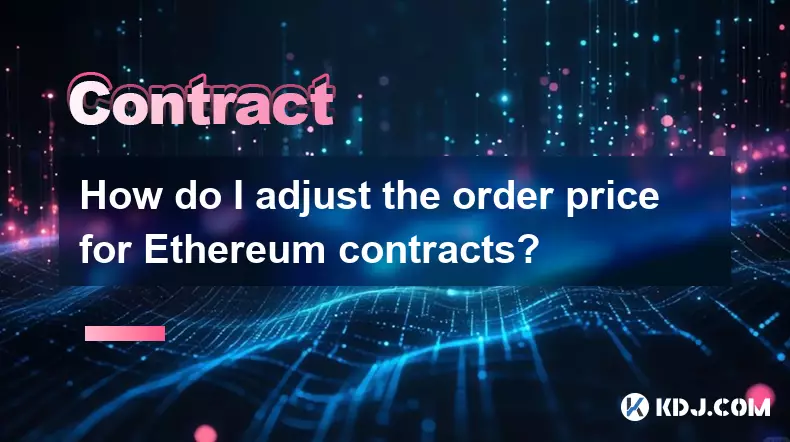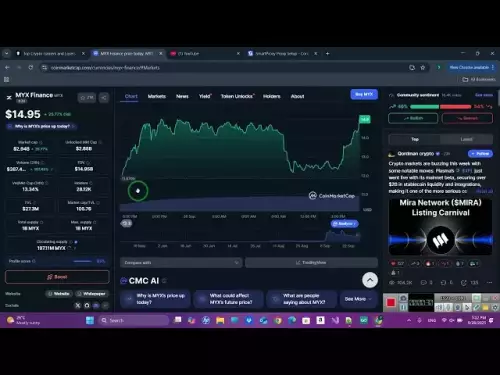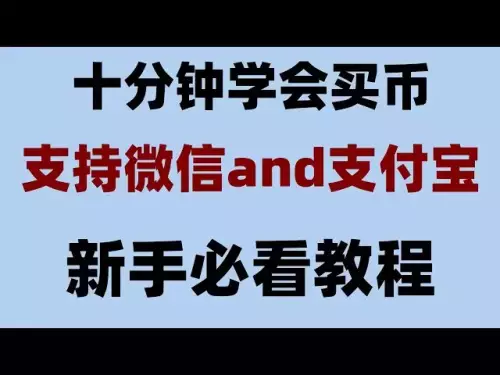-
 bitcoin
bitcoin $109547.008142 USD
0.04% -
 ethereum
ethereum $4011.838726 USD
-0.05% -
 tether
tether $1.000402 USD
-0.01% -
 xrp
xrp $2.798606 USD
0.88% -
 bnb
bnb $970.877944 USD
1.39% -
 solana
solana $202.237275 USD
-0.95% -
 usd-coin
usd-coin $0.999673 USD
0.00% -
 dogecoin
dogecoin $0.229294 USD
-1.15% -
 tron
tron $0.336370 USD
-0.45% -
 cardano
cardano $0.777260 USD
-1.66% -
 hyperliquid
hyperliquid $45.503019 USD
1.73% -
 ethena-usde
ethena-usde $1.000362 USD
0.01% -
 chainlink
chainlink $20.785303 USD
-1.10% -
 avalanche
avalanche $28.755822 USD
-0.11% -
 stellar
stellar $0.358303 USD
-0.48%
How do I adjust the order price for Ethereum contracts?
Ethereum contract price adjustments require gas fees, wallet confirmation, and consideration of network congestion, oracle updates, and protocol rules to ensure timely execution.
Sep 27, 2025 at 08:00 am

Understanding Ethereum Contract Pricing Mechanics
1. Ethereum contract pricing is influenced by the underlying gas fees and market volatility. Traders must account for the dynamic nature of gas costs when placing or modifying orders on decentralized exchanges or derivatives platforms.
2. Smart contracts on Ethereum require computational resources, which are measured in gas units. The price of executing a transaction directly correlates with the current network congestion and the gas price set by the user.
3. When adjusting order prices for Ethereum-based contracts, users interact with protocols that rely on oracles to fetch real-time asset values. These oracles feed data into the smart contract, determining execution thresholds.
4. Order adjustments may involve canceling the initial transaction and submitting a new one with updated parameters. This process consumes additional gas, making timing and cost-efficiency critical.
5. Some decentralized finance (DeFi) platforms offer limit order functionality where users can predefine entry and exit prices. Adjusting these requires confirming the new price point through a wallet signature and gas payment.
Steps to Modify an Ethereum Futures or Options Contract Price
1. Access the trading interface of the platform hosting the Ethereum derivative contract. Platforms like SynFutures, Hegic, or centralized exchanges with ETH options provide dashboards for managing open positions.
2. Locate the open order in your portfolio or active trades section. Select the edit option if available. Not all systems allow direct modification; some require cancellation before re-entry.
3. Input the new desired price level for your limit or stop-loss order. Ensure this aligns with current market depth and liquidity to avoid slippage upon execution.
4. Confirm the adjustment through your connected wallet. You will be prompted to pay gas fees in ETH to finalize the change. High-priority transactions can use elevated gas prices for faster confirmation.
5. Monitor the blockchain explorer using the transaction hash to verify successful update. Once confirmed, the new price parameter becomes binding within the contract logic.
Key Factors Influencing Price Adjustment Success
1. Network congestion significantly impacts how quickly price changes are registered on-chain. During peak usage, even high-gas transactions may experience delays, risking misalignment with fast-moving ETH prices.
2. Decentralized exchanges using automated market makers (AMMs) may not support traditional order book modifications. In such cases, users must manually remove liquidity or close positions before initiating new ones at adjusted rates.
3. Oracles updating price feeds operate on time intervals or deviation triggers. If the oracle hasn't refreshed, the contract may not recognize off-chain price shifts, rendering adjustments ineffective until synchronization occurs.
4. Trading interfaces built atop Layer 2 solutions like Arbitrum or Optimism reduce gas costs but introduce latency in state updates. Adjusting order prices here requires awareness of bridge delays and finality windows.
5. Certain protocols implement time-locked mechanisms or governance rules that restrict frequent order alterations. Users must review contract specifications to avoid failed transactions due to protocol-level limitations.
Frequently Asked Questions
Can I change the price of a perpetual futures contract after submission?Yes, provided the exchange supports editable orders. On decentralized platforms, this typically involves canceling the original order and placing a new one, paying gas for both actions. Centralized exchanges often allow direct edits without extra fees.
What happens if my price adjustment transaction fails?A failed transaction usually results from insufficient gas or network overload. The original order remains active unless explicitly canceled. Users should resubmit with higher gas limits or wait for reduced congestion to complete the modification.
Do price adjustments affect leveraged positions differently?Leveraged contracts amplify both gains and risks. Changing entry or exit prices alters liquidation thresholds. For example, moving a stop-loss further from the market price increases exposure, potentially leading to larger losses if the market moves adversely.
Are there tools to automate Ethereum contract price updates?Yes, bots and smart contract agents like Gelato Network or Chainlink Keepers can monitor conditions and execute price adjustments automatically when predefined criteria are met, reducing manual intervention and reaction lag.
Disclaimer:info@kdj.com
The information provided is not trading advice. kdj.com does not assume any responsibility for any investments made based on the information provided in this article. Cryptocurrencies are highly volatile and it is highly recommended that you invest with caution after thorough research!
If you believe that the content used on this website infringes your copyright, please contact us immediately (info@kdj.com) and we will delete it promptly.
- BlockchainFX, Binance Coin, Cardano: Decoding the Crypto Landscape in 2025
- 2025-09-29 04:45:12
- Cathie Wood, Bitcoin, and the Future of Monetary Standards: A New York Perspective
- 2025-09-29 04:25:17
- Crypto Presales Under the Microscope: BlockDAG, HYPER, and the Hunt for the Next Big Thing
- 2025-09-29 04:25:17
- Ethereum Bulls Eye $4,000: Is the Rally Sustainable?
- 2025-09-29 05:05:14
- Aster Price Surge: Bullish Breakout or Falling Wedge Fiasco?
- 2025-09-29 04:45:12
- Aptos Price Prediction: Will the Velociraptor Upgrade Trigger a Rally?
- 2025-09-29 04:50:01
Related knowledge

How do I use the scheduled order feature in Cardano (ADA) contracts?
Sep 28,2025 at 10:18pm
Understanding Scheduled Orders in Cardano Smart ContractsCardano operates on a proof-of-stakes consensus mechanism and uses the Plutus scripting langu...

How do I enable the "scalping-only" mode for Cardano (ADA) contracts?
Sep 24,2025 at 03:19am
Understanding Scalping Strategies in Crypto Derivatives1. Scalping in cryptocurrency trading refers to executing multiple short-term trades within min...

What is the settlement time for Cardano (ADA) contracts?
Sep 28,2025 at 04:18am
Understanding Cardano's Contract Settlement Mechanism1. Cardano operates on a proof-of-stake consensus model known as Ouroboros, which fundamentally i...

How do I add margin to Cardano (ADA) contracts?
Sep 27,2025 at 07:54pm
Understanding Margin in Cardano (ADA) Smart ContractsCardano operates on a proof-of-stake blockchain that supports smart contracts through its Plutus ...

What is the maximum position limit for Cardano (ADA) contracts?
Sep 23,2025 at 11:00pm
Understanding ADA Futures and Derivatives Market Structure1. Cardano (ADA) futures contracts are offered by several major cryptocurrency derivatives e...

What is the maker fee for Cardano (ADA) contracts?
Sep 26,2025 at 09:01am
Understanding Maker Fees in Cardano (ADA) Contracts1. The concept of maker fees applies broadly across decentralized exchanges and smart contract plat...

How do I use the scheduled order feature in Cardano (ADA) contracts?
Sep 28,2025 at 10:18pm
Understanding Scheduled Orders in Cardano Smart ContractsCardano operates on a proof-of-stakes consensus mechanism and uses the Plutus scripting langu...

How do I enable the "scalping-only" mode for Cardano (ADA) contracts?
Sep 24,2025 at 03:19am
Understanding Scalping Strategies in Crypto Derivatives1. Scalping in cryptocurrency trading refers to executing multiple short-term trades within min...

What is the settlement time for Cardano (ADA) contracts?
Sep 28,2025 at 04:18am
Understanding Cardano's Contract Settlement Mechanism1. Cardano operates on a proof-of-stake consensus model known as Ouroboros, which fundamentally i...

How do I add margin to Cardano (ADA) contracts?
Sep 27,2025 at 07:54pm
Understanding Margin in Cardano (ADA) Smart ContractsCardano operates on a proof-of-stake blockchain that supports smart contracts through its Plutus ...

What is the maximum position limit for Cardano (ADA) contracts?
Sep 23,2025 at 11:00pm
Understanding ADA Futures and Derivatives Market Structure1. Cardano (ADA) futures contracts are offered by several major cryptocurrency derivatives e...

What is the maker fee for Cardano (ADA) contracts?
Sep 26,2025 at 09:01am
Understanding Maker Fees in Cardano (ADA) Contracts1. The concept of maker fees applies broadly across decentralized exchanges and smart contract plat...
See all articles










































































